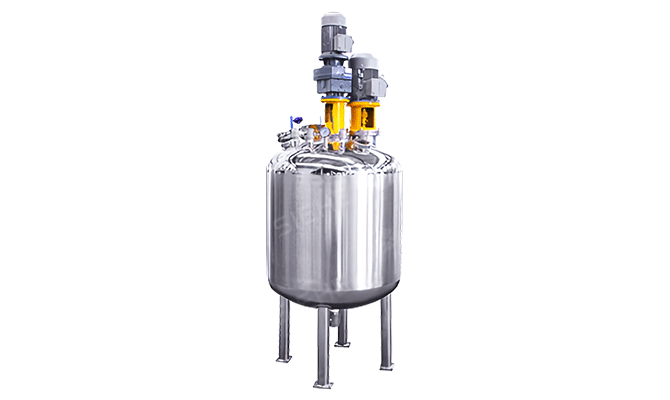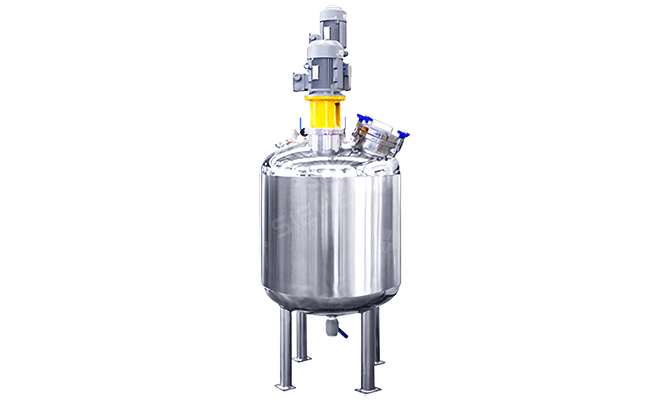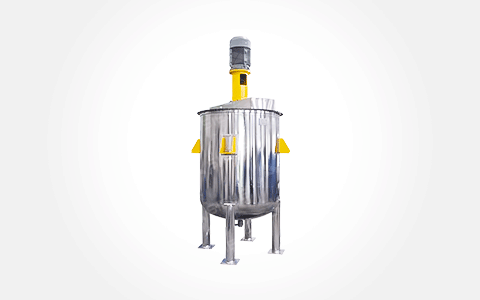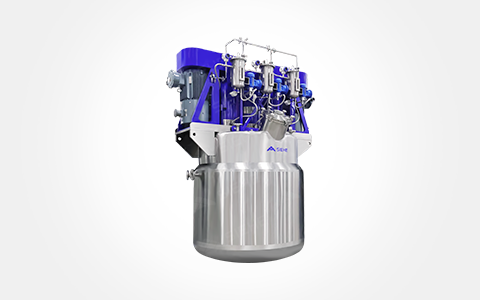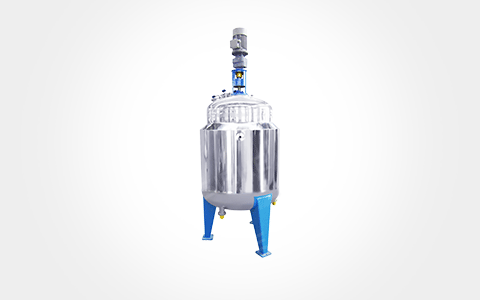
- Home
-
Products
Turn-key Project
- Battery Slurry Production Equipment
- Liquid Complete Production Line
- Adhesive Complete Production Line
- Powder Complete Production Line
- Liquid Storage and Automatic Batching System
- Powder Storage and Automatic Batching System
- EPC Project General Contracting Business
- Water-based Paint Production Line
- Putty Complete Production Line
- System Integration
- Application Industries
- News
- Service
- About Us
- Contact Us

-
- High Viscosity Mixers
- Dispersers&Mills
- High Shear Emulsifiers
- Grinding Machines
- Vacuum Drying Mixers
- Powder Blenders
- Extrusion Machine
- Container Washing Machine
- Powder Procedure Processing
- Filling And Packing
- Filters And Sieves
- Kettles/Vessels/Tanks/ Hoppers
- Laboratory Equipment
- Batching And Metering
- Turn-key Project
Dual-shaft Dispersing Vessel
The Dual-shaft Dispersing Vessel is composed of high-speed disperser, low-speed mixer, control system and vessel. Its design makes it more effective to dispersing during the mixing and dispersing process, during the mixing process , the material drives the material to the dispersing part, so as to achieve more sufficient mixing and dispersing, so that the material can be quickly dispersed and dissolved, the particles become finer, and the effect of uniform mixing is achieved; for the mixing functions of liquid-liquid or powder-liquid, it belongs to a mass production product; and it can be supplemented with dispersing, emulsififying, heating, and cooling functions to meet the needs of different production processes; it can run for a long time, stable, with low noise, easy to operate, and with strong adaptability. It is an ideal multi-functional equipment for mixing and dispersing. In addition, the cleaning of this equipment is also very convenient, which further improves its efficiency and convenience. It is particularly suitable for coatings, paints, petroleum, chemicals, rubber, pesticides, dyes, medicines, food and other industries, and can realize automatic production.
Product Overview
| Material Viscosity | ≤500,000 cps |
| Production Capacity | 50-50,000L |
| Application Industries | Prefect meet the requirement of dispersing and mixing materials in industries such as biology, pharmaceuticals, food, paint & coating, ink, adhesive, pigment, pesticide and etc.. (Please click ‘Free Consultation’ for more information) |
| Application Materials | Good for all kinds of slurries with viscosity less than 500,000cps, and solid content less than 60%, such as emulsion paint, industrial paint, water-based ink, pesticide, adhesive and etc. |
Work principle
The mixing blades are driven by the power unit to rotate in a fixed direction. During the rotation process, the materials are driven to rotate axially and radially. The materials in the mixer have both axial and circular motions, so there are several mixing forms such as shear mixing and diffusion mixing. It can effectively stir and mix the materials quickly.
Through the high-speed rotation of dispersing disc, the materials will become in annular form flow, resulting in strong vortex flow, which descend down to the bottom of the vortex in spiral state. During the process, materials are dispersed and dissolved efficiently due to the strong shearing crash and friction among the particles. The dispersing disc moves in a circular motion, generating a good radial effect, accelerating material circulation and improving dispersion efficiency.
The precision processing technology of the emulsifying head makes the rotor and stator highly coordinated. The powerful motor rotates at high speed to form a vacuum between the rotor and stator, and the material is sucked from the top and bottom of the rotor and stator. The strong kinetic energy makes the rotor produce a very high linear velocity, so that the material is ejected after strong impact, crushing, centrifugal extrusion, liquid layer friction, and strong shearing between the rotor and stator. Under the action of various forces in different directions, strong turbulence is generated. With the right amount of emulsifier and mature technology, the material is repeatedly depolymerized, dispersed, homogenized, refined, and sheared for a certain period of time to produce a stable emulsion.
Product Advantages
-
High efficiency, low energy
The Dual-shaft Dispersing Vessel adopts innovative dispersion technology, the high-speed rotating of dispersion shaft forces solid particles or liquid materials to be dispersed into the liquid medium. This dispersion method can effectively break up particle aggregates and improve the stability and fluidity of the liquid. Compared with the single-shaft equipment, this dispersing effect of the material is better and more uniform, and saving time for mass production.
-
Suitable for high viscosity materials
Since the two shafts rotate simultaneously, the vortex phenomenon in the mixing tank is reduced, the vortex is not deep, and the inhalation of air is avoided, the charging factor and dispersion ability are improved, and it is suitable for materials with higher viscosity.
-
Customized Options
The size of the mixing blades and other specifications can be designed and manufactured according to the specific requirements of the customer. The shape of the vessel can be of many kinds, such as cylindrical, elliptical, etc.
Technical Parameter
| Model | Working volume
(L) |
Design volume
(L) |
Mixing power
(kw) |
Mixing speed
(rpm) |
Dispersing power
(kw) |
Dispersing speed
(rpm) |
| SJBF-100 | 100 | 140 | 4-7.5 | 0-85 | 11-18.5 | 0-2000 |
| SJBF-200 | 200 | 280 | 5.5-11 | 0-85 | 15-22 | 0-1800 |
| SJBF-300 | 300 | 400 | 7.5-15 | 0-70 | 22-45 | 0-1500 |
| SJBF-500 | 500 | 665 | 11-22 | 0-60 | 22-55 | 0-1200 |
| SJBF-800 | 800 | 1070 | 15-30 | 0-50 | 37-75 | 0-1200 |
| SJBF-1000 | 1000 | 1320 | 22-37 | 0-45 | 45-90 | 0-1000 |
| SJBF-1500 | 1500 | 1980 | 30-45 | 0-45 | 55-110 | 0-900 |
| SJBF-2000 | 2000 | 2550 | 37-55 | 0-40 | 75-132 | 0-800 |
| SJBF-3000 | 3000 | 3820 | 45-75 | 0-35 | 110-160 | 0-700 |
Remarks:
* ①②④ Must know the state, viscosity, and mixing effect of the material to confirm the form of the mixing blade and the mixing power.
* ③ The material of the equipment is selected according to the corrosiveness and other characteristics of the material.
* ④ The capacity is data based on materials with viscosity approx. 2,000cps. The model selection shall be based on the data such as the materials viscosity, density etc..
* ⑤ The weight of the equipment does not include the weight of the kettle/tank, and is related to the form of the agitator and the viscosity of the material.
* The table cannot include all products, please contact with our sales engineers for more information.
* The table is data based on single-shaft mixer, dual-shaft or multi-functional mixing kettle can be customized according to process and material characteristics, please contact with our sales engineers for more information.
Contact Information
Leave Us a Message
Please kindly fill out the following form if any question or for more information, we will reply you as soon as possible.






